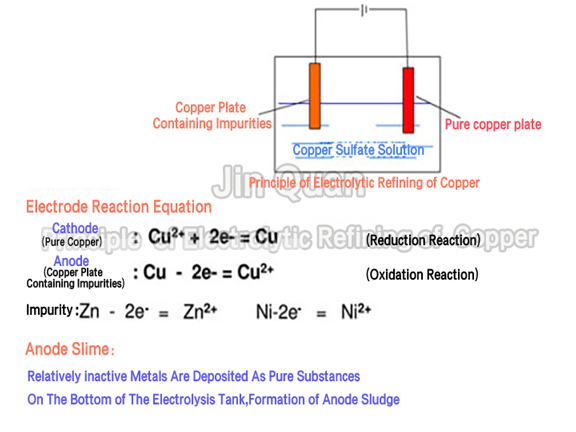-
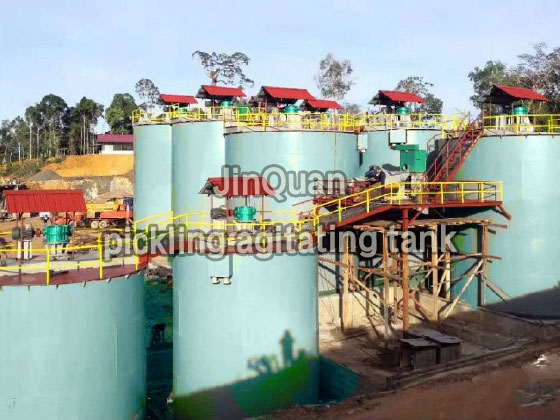 pickling agitating tank
pickling agitating tankFeatures of pickling agitating tank:
RJS pickling agitating tank is a kind of special equipment for removing the materials accumulated on the surface of activecarbon, such as calcium carbonate, by using the diluted hydrochloric acid. It is a kind of agitating tank improved on the basis of RJ agitating tank, With specially designed impeler, its abrasion to the carbon is low, Its shaft and impeller are made of stainless steel.
Notes for Selection
While placing your order, please specify the model and quantity, as well as the material of the tank. The tank many bemade of stainless steel or anticorrosion treated common steel plate, at the customer's option.
Technical parameter list of RJS pickling agitating tank
槽体尺寸(mm)
Size of trough
有效容积(m°)
Effective
volume
叶轮直径(mm)
Impeller Dia
转速(r/min)speed
电动机 Motor
外形尺寸(mm)
Dimension
(LxWxH)
机器总重
(kg)
Total weight
直径Dia
高度Heigh
型号
Model
功率(kW)
Power
1000
1000
0.7
240
238.3
Y100L-6
1.5
1198x1198x2130
531
1500
1500
2.2
400
142
Y132S-8
2.2
1798x1798x2880
955.4
-
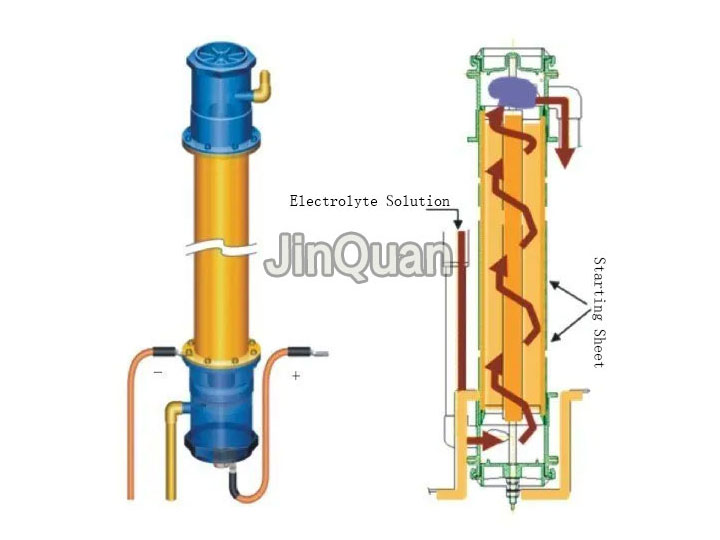 electrowinning/electrorefining tank
electrowinning/electrorefining tankRotating Electrode Technology and Conventional Electroplating Technology share the same electrochemical theoretical foundation. Both involve immersing the anode and cathode in an electrolyte solution containing target metal cations, achieving directed movement of ions under electric fields to deposit the target metal on the cathode.
The difference lies in that rotating electrode devices allow for higher flow velocity of the electrolyte solution, effectively utilizing the rapid flow of the electrolyte to eliminate concentration polarization phenomena during the electroplating process. This ensures more complete reaction and high purity of cathodic products with high current efficiency. It is particularly suitable for (wet metallurgical industry) in the selective electrolysis (electroplating) separation and purification of low-concentration and multi-component electrolyte solutions, or for removing metal ions from wastewater.
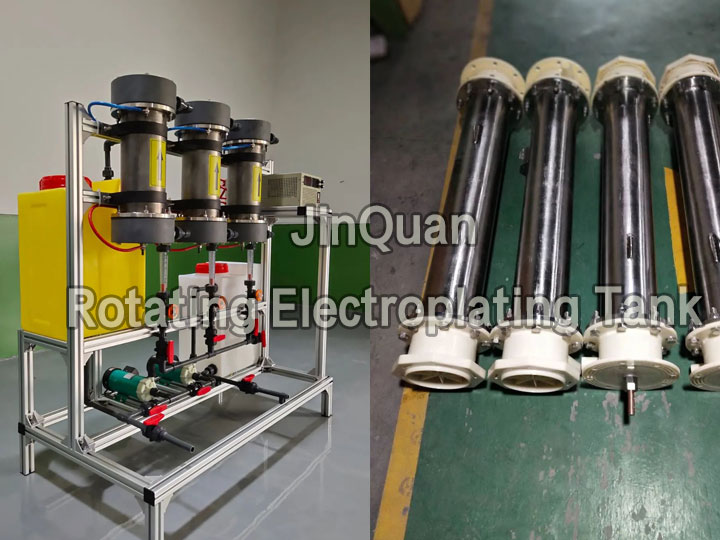
Applications:
1、Copper refining waste liquid purification;
2、Copper corrosion solutions copper recovery;
3、Zinc smelting slag copper and nickel recovery;
4、Copper, cobalt, nickel, zinc mixed metal ion solution copper, cobalt, nickel recovery;
5、Cyano solutions electrorefining Au and Ag recovery。
-
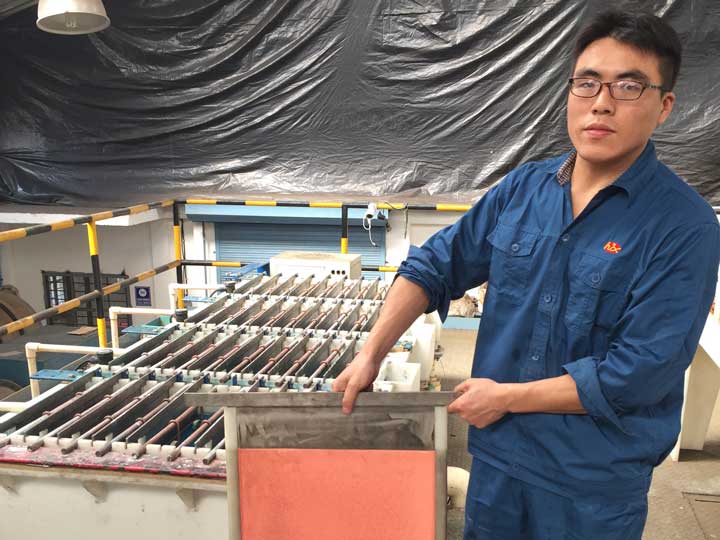 copper leaching system
copper leaching system1、Customer demand
The metal copper in copper ore is extracted by physical and chemical methods, and a theoretical and practical process is found for extracting copper from copper ore.
2. Basic customer data
Feed type
Copper production
Product shape
process mode
Solution copper content
Effluent copper content
20% copper ore concentrates powder
100 kg
Copper sulfate solution
Batch processing
5-20%
20g/L
Copper sulfate solution
100 kg
Electrolytic copper plate
Batch processing
10-40g/L
2g/L
3.Process introduction
The experiment was mainly carried out in three steps:
In the first step, the copper metal in the copper ore is dissolved in the liquid, and the solid copper metal is converted into the free ion state;
The second step, the solution of dissolved copper is filtered to remove impurities;
The third step is to extract and purify the copper in the copper containing solution. The result is a high purity copper sheet.
4.Experimental Process:
1.Configure the concentration of about 10% to 15% concentration of dilute sulfuric acid
solution standby.
2.A certain amount of copper ore is weighed and crushed, and the crushed copper ore powder is placed in dilute sulfuric acid. After the copper ore is put into dilute sulfuric acid,
a violent reaction occurs in the solution, some gas emerges, and the copper ore slowly dissolves. The color of the potion turns cloudy.
3.Add an appropriate amount of oxidant to accelerate the dissolution of copper in the ore powder.
4.After about 1 hour,the solution appears stratified, green clear liquid appears on the upper layer,and very colored insoluble solid or sludge appears on the bottom.
5.The precipitation was filtered and separated, and the green liquid was filtered out.
6.The copper content of the green filtrate was analyzed, and the concentration of copper ion reached 40g/L. High copper content.
7.The electrolysis experiment was carried out on the green copper filter liquid, with the filter
liquid as the electrolyte, titanium plate as the anode and stainless steel plate as the cathode.
8.A certain intensity current is applied to the anode and cathode plate for electrolysis, and a
copper substance appears on the cathode plate and is attached to the cathode stainless steel plate. Continue electrolysis.
-
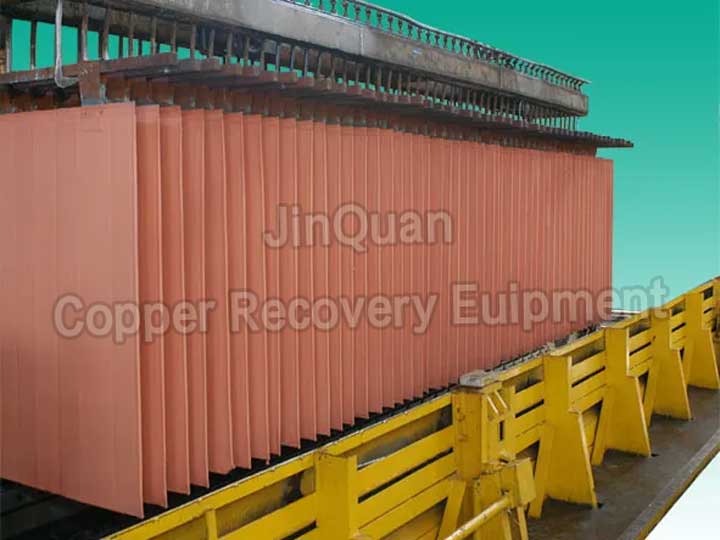 copper recovery equipment
copper recovery equipmentThe copper electrolysis system uses the latest permanent cathode technology, completely replacing the Initial electrode plate electrolysis process; high-dimensional precision ethylene-base epoxy resin is used for the entire electrolysis tank, replacing the original glass electrolysis tank to accelerate material turnover.
Simultaneously, ground communication is added, enabling wireless information exchange between crane, machinery, and electrolysis tanks during assembly status; AGV small car intelligent transfer is adopted for output lines to optimize material transportation scheduling; constant brightness control and human body sensing technologies are applied to achieve smart lighting and reduce energy consumption; monitoring of equipment operation status, automatic generation of data reports and statistical analysis are implemented.
Copper Recovery Euipment Project Case:
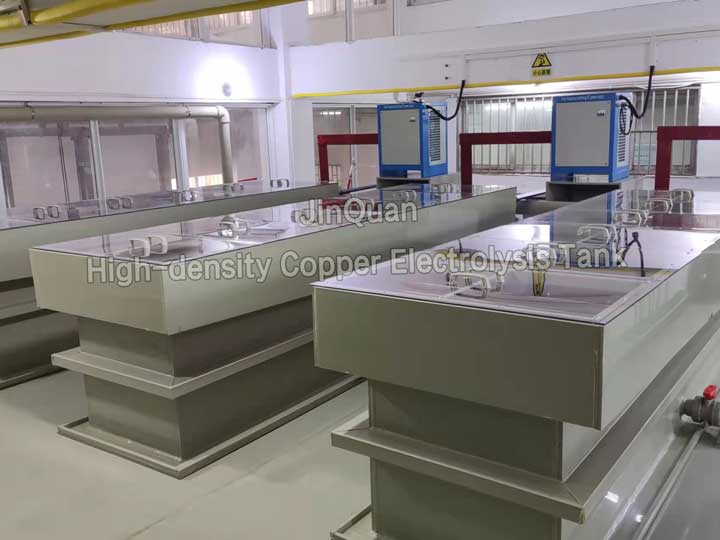
High-density Copper Electrolysis Tank Model Marameters:
Model
Copper Output Capacity
Other
Power
Materials
JQ-JDJ-20
20kg/d
depending on operating conditions
380V
PPH
JQ-JDJ-50
50kg/d
JQ-JDJ-100
100kg/d
-
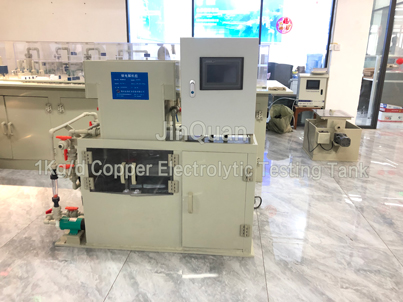 copper electrolysis testing machine
copper electrolysis testing machineThe raw material is 99.95% copper, used for experimenting in producing 99.999% pure copper. We need to design a copper electrolysis tank capable of producing 1 kilogram of copper per day.
Principle of Electrolytic Refining of Copper:
